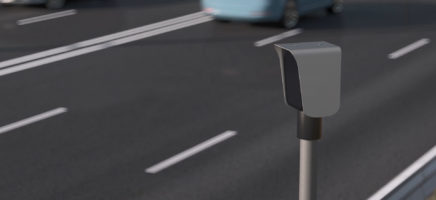Location Matters: Important Considerations When Installing Automated Enforcement Systems
We all know at least one notorious intersection. Maybe it’s known for frequent red-light running, or perhaps the speed limit is virtually ignored. For any reason, this intersection endangers other commuters, pedestrians and the drivers themselves. Because residents, law enforcement or both acknowledge an urgent need for improved safety conditions, this intersection might be an ideal candidate for an automated enforcement system.
Deciding where to place a photo enforcement system takes research, data collection, public feedback and foresight to determine where the technology will be most effective at changing negative driving behaviors and freeing up law enforcement resources. Installing and investing in an automated enforcement system is a commitment: here are some steps to ensure it has the most positive impact possible for the community.
Collect Relevant Data
A jurisdiction can most effectively locate and validate the necessity of an automated enforcement system by reviewing traffic data, both current and historical. The relevant numbers can be found through:
- Evaluating historical law enforcement records –These records may be used to reveal an on-going, prevalent issue by illustrating the number of violations, the number of crashes or both. This data provides a benchmark for officials to refer back to when analyzing the effect of speed or red-light cameras post-installment.
- Conducting a traffic survey – Another valuable research method is conducting a traffic survey, accomplished through monitoring traffic in a specified area for a certain amount of time. A jurisdiction interested in setting up red-light or speed cameras might utilize surveys to baseline traffic volume and/or speeding and red-light running incidents.
- Reviewing analytics – More jurisdictions are utilizing advanced data analytics tools to assess and compare statistics and outcomes from intersections of similar size, layout and traffic volume to predict where automated enforcement could make the most sense.
Consider Your Deployment Options
Next, this information can be used to see what type of deployment is most appropriate for a specified location. Not all types of enforcement systems make sense at all locations — certain technologies, by nature, function better in different locations.
- Red-light cameras – This fixed technology suits intersections where incidents are common, according to relevant data. Depending on local laws and needs, red-light cameras are available as a standalone solution, or they can be packaged with other automated technologies. For instance, our Halo system is a fixed solution that can also include speed enforcement, intelligent crash preemption and automated license plate reading from a single camera system.
- Speed cameras – To meet municipality needs and regulations, there are multiple deployment options for speed enforcement: fixed, mobile (vehicle, trailer or cabinet based) and handheld. Fixed solutions are ideal for roadways that need monitoring 24/7 due to a history of speeding incidents. Mobile and handheld solutions provide flexibility and the ability to expand the safety net through the rotation of systems to different locations (e.g., school zones, work zones, residential areas or parks among other issues outlined in this blog).
Monitor, Analyze & Respond
A jurisdiction can assess the impact of automated enforcement by comparing the number of incidents and violations within the system’s view to the benchmarks determined during the planning process. This allows jurisdictions to monitor traffic trends, analyze driving patterns, deter dangerous driving behaviors and better understand where an automated system is most beneficial.
The surrounding community needs to also be informed of where a public enforcement system is placed. Successful long-term photo enforcement installations rely on a two-way dialogue between citizens and their municipality. New programs should be released with a strong community outreach strategy to inform the public about the purpose of the program, when it will begin and where the systems will be installed. It is helpful to follow up annually to highlight reductions in violations and crashes.
When a system is successfully implemented, a jurisdiction might employ a similar methodology to find other locations where cameras might help improve conditions, too.
Finding the correct placement includes analyzing historical records, considering current traffic patterns, informing the public and responding to future trends. Contact us to learn more about how Redflex can assist with site selection for your automated enforcement system.

